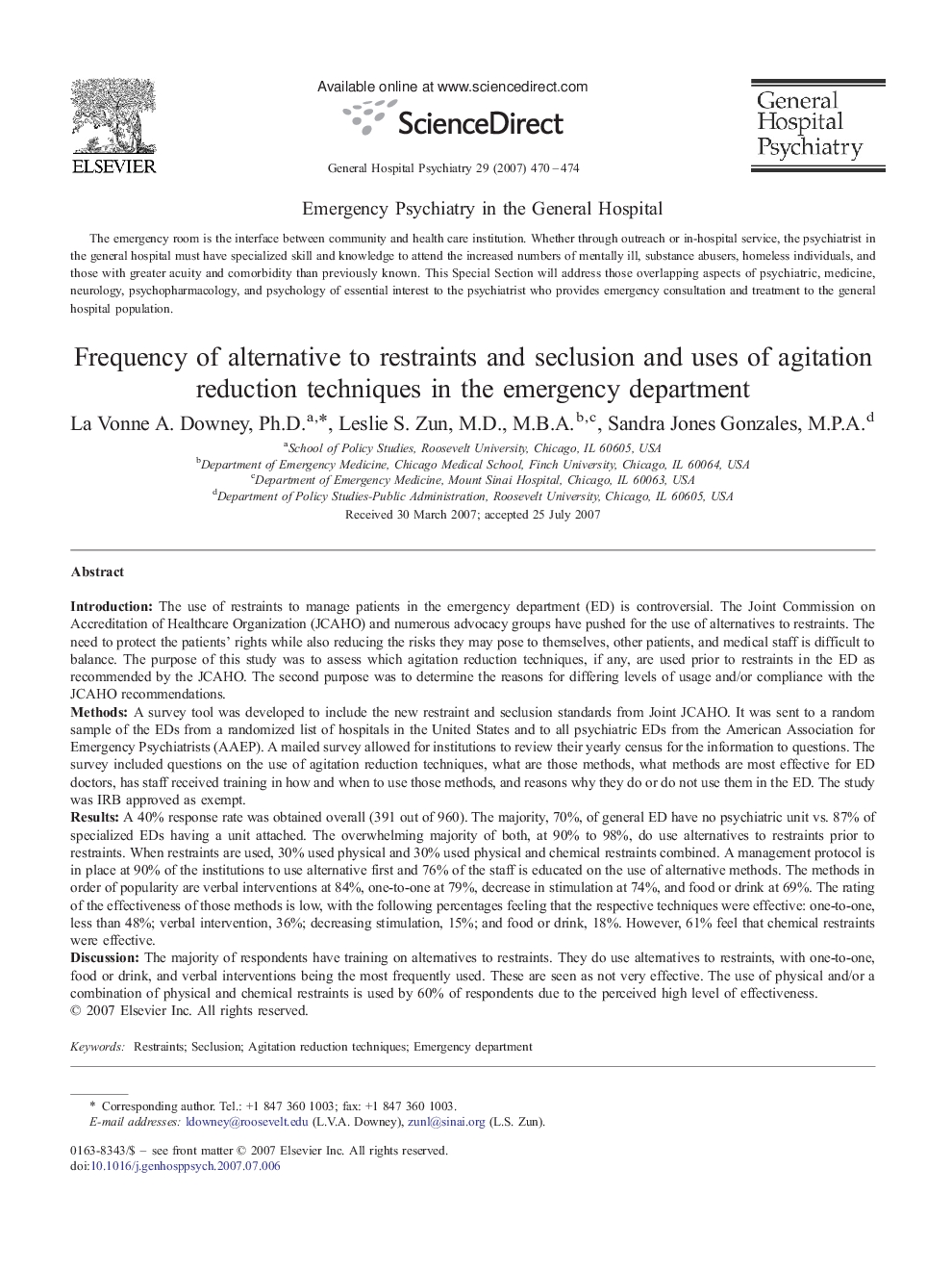| کد مقاله | کد نشریه | سال انتشار | مقاله انگلیسی | نسخه تمام متن |
|---|---|---|---|---|
| 3238377 | 1205717 | 2007 | 5 صفحه PDF | دانلود رایگان |

IntroductionThe use of restraints to manage patients in the emergency department (ED) is controversial. The Joint Commission on Accreditation of Healthcare Organization (JCAHO) and numerous advocacy groups have pushed for the use of alternatives to restraints. The need to protect the patients' rights while also reducing the risks they may pose to themselves, other patients, and medical staff is difficult to balance. The purpose of this study was to assess which agitation reduction techniques, if any, are used prior to restraints in the ED as recommended by the JCAHO. The second purpose was to determine the reasons for differing levels of usage and/or compliance with the JCAHO recommendations.MethodsA survey tool was developed to include the new restraint and seclusion standards from Joint JCAHO. It was sent to a random sample of the EDs from a randomized list of hospitals in the United States and to all psychiatric EDs from the American Association for Emergency Psychiatrists (AAEP). A mailed survey allowed for institutions to review their yearly census for the information to questions. The survey included questions on the use of agitation reduction techniques, what are those methods, what methods are most effective for ED doctors, has staff received training in how and when to use those methods, and reasons why they do or do not use them in the ED. The study was IRB approved as exempt.ResultsA 40% response rate was obtained overall (391 out of 960). The majority, 70%, of general ED have no psychiatric unit vs. 87% of specialized EDs having a unit attached. The overwhelming majority of both, at 90% to 98%, do use alternatives to restraints prior to restraints. When restraints are used, 30% used physical and 30% used physical and chemical restraints combined. A management protocol is in place at 90% of the institutions to use alternative first and 76% of the staff is educated on the use of alternative methods. The methods in order of popularity are verbal interventions at 84%, one-to-one at 79%, decrease in stimulation at 74%, and food or drink at 69%. The rating of the effectiveness of those methods is low, with the following percentages feeling that the respective techniques were effective: one-to-one, less than 48%; verbal intervention, 36%; decreasing stimulation, 15%; and food or drink, 18%. However, 61% feel that chemical restraints were effective.DiscussionThe majority of respondents have training on alternatives to restraints. They do use alternatives to restraints, with one-to-one, food or drink, and verbal interventions being the most frequently used. These are seen as not very effective. The use of physical and/or a combination of physical and chemical restraints is used by 60% of respondents due to the perceived high level of effectiveness.
Journal: General Hospital Psychiatry - Volume 29, Issue 6, November–December 2007, Pages 470–474